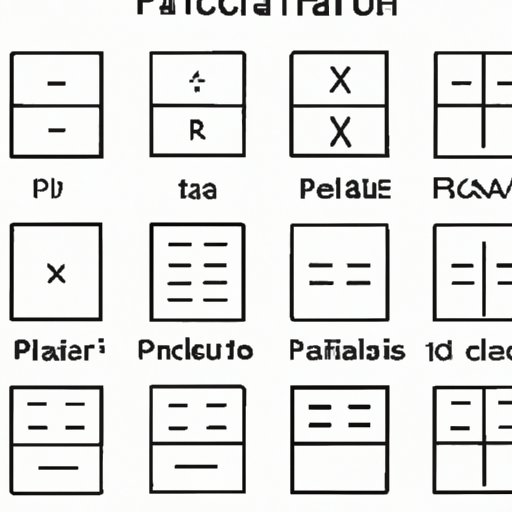
I. Introduction
A radical is a mathematical notation symbolized by the √ symbol, which represents the operation of finding the root of a number. The number inside the radical sign is known as the radicand. Simplifying a radical involves finding a simpler expression that is equivalent, without any radicals. Many students find this concept challenging, but simplifying radicals is an essential skill in algebra, geometry, and trigonometry. This article will provide step-by-step guidance on how to simplify a radical and illustrate it with examples.
II. Method 1: Factor the Radicand
Factoring means to find the numbers that when multiplied together result in the given number. In the context of simplifying radicals, factoring involves finding the factors of the radicand that are perfect squares. Suppose we have a radical with an integer radicand that is not a perfect square:
√12
Step 1: Factor the radicand into its prime factors.
12 = 2 x 2 x 3
Step 2: Circle the pairs of identical factors and remove them from the radical, leaving any leftover factors inside the radical.
√(2 x 2 x 3) = √4 x 3 = 2√3
Examples:
√75 = √(5 x 5 x 3) = 5√3
√48 = √(2 x 2 x 2 x 2 x 3) = 4√3
III. Method 2: Use Perfect Squares
Perfect squares are numbers that result from squaring an integer. Recognizing perfect squares is useful in simplifying radicals since the square root of a perfect square gives a whole number. Suppose we have a radical with an integer radicand:
√16
Step 1: Identify if the radicand is a perfect square. In this case, since 16 is a perfect square (4 x 4), we can simplify as:
√16 = 4
Examples:
√100 = 10
√121 = 11
Using perfect squares to simplify radicals becomes more apparent when dealing with variables. For instance, √(x^2y^4) can be simplified to xy^2 since x^2 is a perfect square, and y^4 is the square of y^2.
IV. Method 3: Rationalize the Denominator
Rationalizing the denominator means manipulating the fraction to eliminate the radical in the denominator, making it a rational number. This is useful when working with fractions since rational numbers are easier to manipulate than irrational numbers. Suppose we have a fraction with a radical in the denominator:
2 / √5
Step 1: Multiply the numerator and denominator by the conjugate of the denominator. The conjugate of a+√b is a-√b.
2 / √5 * ( √5 / √5) = 2√5 / 5
Examples:
1 / √3 = √3 / 3
3 / (√2 + 1) = (3(√2 – 1)) / (2 – 1)
V. Method 4: Simplify Using Exponents
Another way to simplify radicals is by using exponents. We can convert radicals into fractional exponents and simplify them using the exponent rules. Suppose we have a radical raised to a power:
√(x^6)
Step 1: Convert the radical to fractional exponents.
√(x^6) = x^(6/2) = x^3
Examples:
√(x^8y^12) = x^4y^6
√(a^5b^6) = a^2√(ab^2)
VI. Method 5: Use a Calculator
Using a calculator can save time and effort when dealing with complicated radical expressions. Modern calculators have a square root function that can compute the square root of any number, including irrational numbers. However, it’s useful to know how to do it by hand, as some exams may restrict calculators or require exact answers instead of approximations.
Examples:
√38 ≈ 6.16
√(3 + √5) ≈ 1.902
VII. Conclusion
Simplifying radicals involves finding a simpler expression that is equivalent to the original expression. There are various methods for simplifying radicals, including factoring the radicand, using perfect squares, rationalizing the denominator, using exponents, and using a calculator. Each method has its application, and choosing the best method should depend on the situation. Practice is essential in mastering this skill, so keep practicing, and it will become more comfortable over time.




